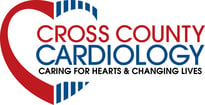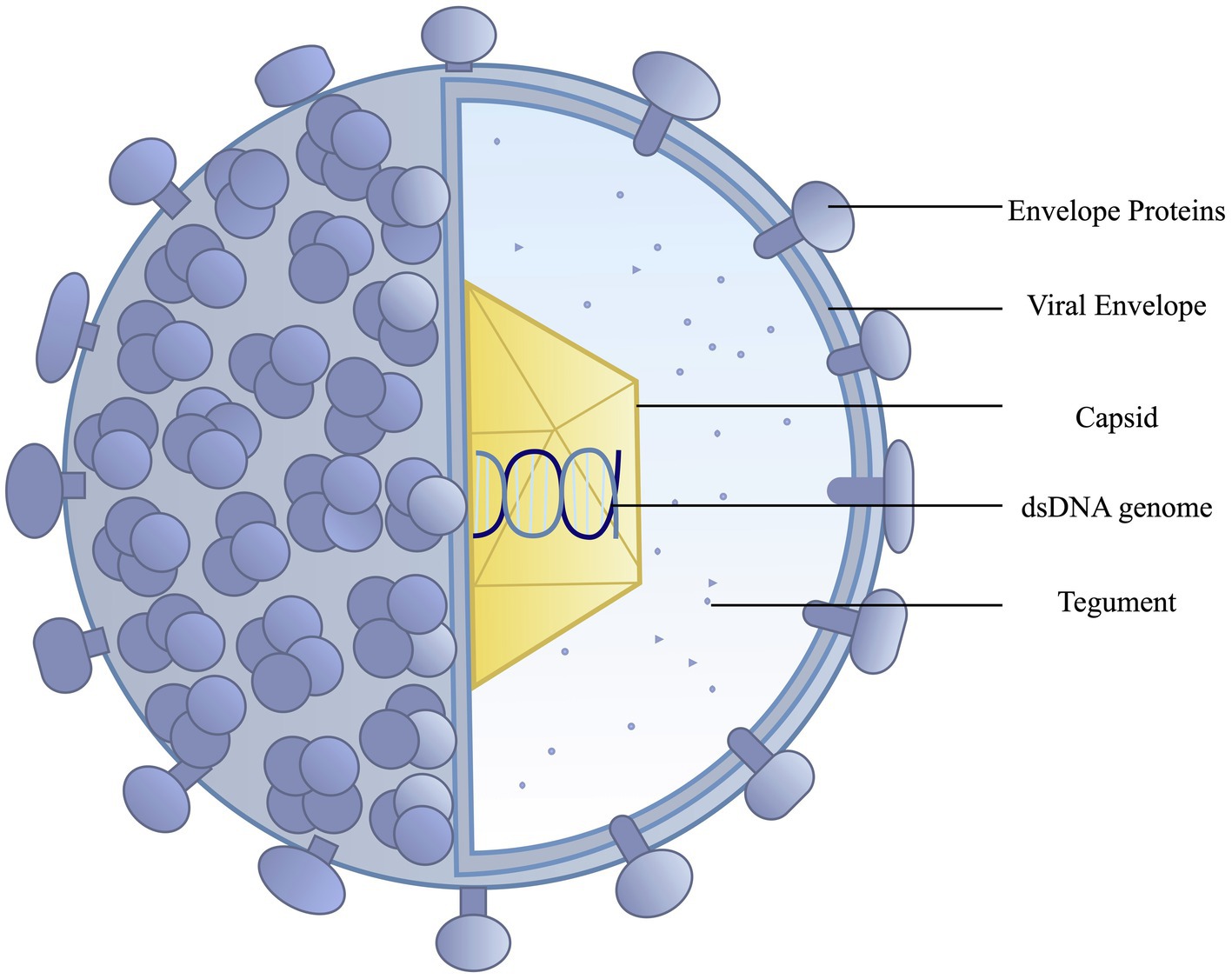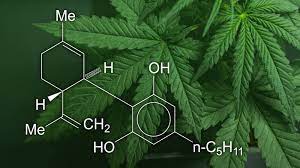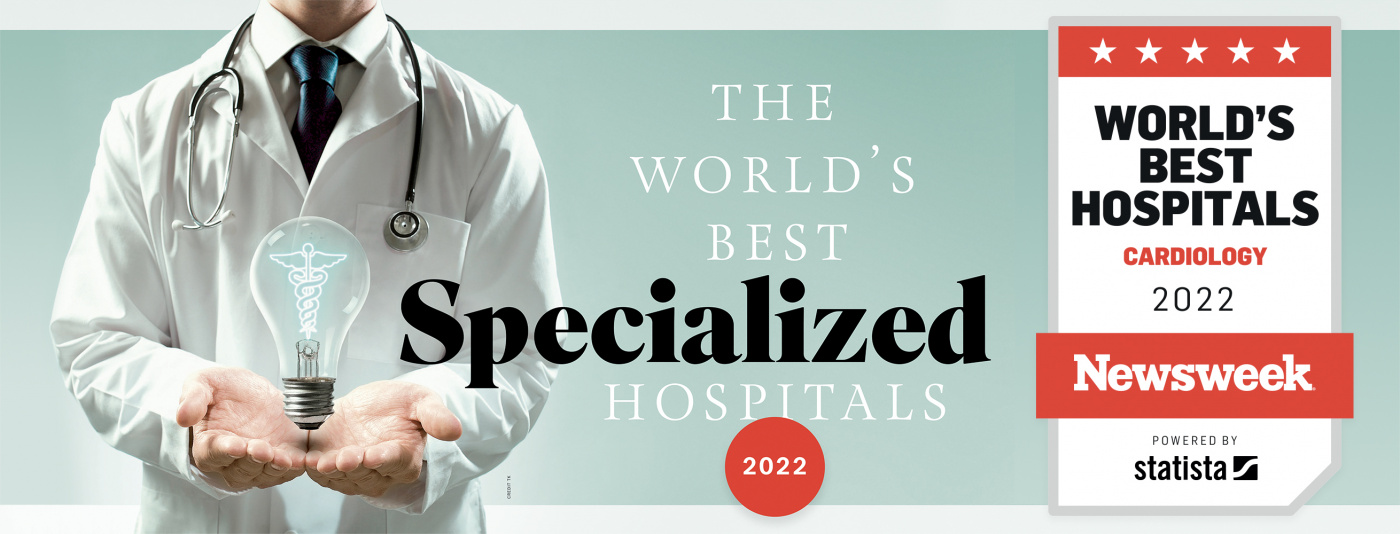How to define a great cardiologist in New Jersey
Abstract
Background
Hypertensive disorders of pregnancy (HDP), including gestational hypertension and preeclampsia, are associated with an increased risk of CVD.
Objectives
The purpose of this study was to evaluate associations between HDP and long-term CVD and identify the proportion of the association mediated by established CVD risk factors.
Methods
Parous participants without CVD in the Nurses’ Health Study II (n = 60,379) were followed for incident CVD from first birth through 2017. Cox proportional hazards models estimated HRs and 95% CIs for the relationship between HDP and CVD, adjusting for potential confounders, including prepregnancy body mass index, smoking, and parental history of CVD. To evaluate the proportion of the association jointly accounted for by chronic hypertension, hypercholesterolemia, type 2 diabetes, and changes in body mass index, we used the difference method.
Results
Women with HDP in first pregnancy had a 63% higher rate of CVD (95% CI: 1.37-1.94) compared with women with normotensive pregnancies. This association was mediated by established CVD risk factors (proportion mediated = 64%). The increased rate of CVD was higher for preeclampsia (HR: 1.72; 95% CI: 1.42-2.10) than gestational hypertension (HR: 1.41; 95% CI: 1.03-1.93). Established CVD risk factors accounted for 57% of the increased rate of CVD for preeclampsia but 84% for gestational hypertension (both P < 0.0001).
Conclusions
Established CVD risk factors arising after pregnancy explained most (84%) of the increased risk of CVD conferred by gestational hypertension and 57% of the risk among women with preeclampsia. Screening for chronic hypertension, hypercholesterolemia, type 2 diabetes, and overweight/obesity after pregnancy may be especially helpful in CVD prevention among women with a history of HDP.
Introduction
New-onset hypertensive disorders of pregnancy (HDP) (gestational hypertension and preeclampsia) occur in approximately 15% of parous women and are consistently associated with a 2-fold increased risk of cardiovascular disease (CVD) and premature CVD-related mortality, compared with women with a history of normotensive pregnancy.1,2 However, few studies of incident CVD after hypertensive pregnancies have adjusted for shared prepregnancy risk factors, such as body mass index (BMI),3-5 or had a mean/median follow-up of more than 30 years.4,6-9
Women with a history of HDP have elevated risks of chronic hypertension, hypercholesterolemia, and type 2 diabetes mellitus (T2DM), and the American Heart Association and American College of Cardiology endorse preeclampsia as a risk-enhancing factor for hypercholesterolemia.10,11 However, the extent to which the relationship between HDP and CVD events is mediated by these established CVD risk factors remains less clear. Previous studies have examined the role of individual mediators, but no study has examined the joint contribution of chronic hypertension, hypercholesterolemia, T2DM, and BMI in mediating the relationship between HDP and CVD.5,12,13 The American Heart Association has recognized gestational hypertension and preeclampsia as risk factors for CVD and encouraged clinicians to evaluate cardiovascular risk by screening women for these adverse pregnancy outcomes since 2011.14 Longitudinal investigation of CVD incidence after a hypertensive pregnancy that examines the role of intermediate CVD risk factors is essential to inform screening practices and clinical recommendations for women with a history of HDP.
With up to over 50 years of follow-up after first birth and longitudinal collection of health-related behaviors, reproductive history, and incident CVD risk factors and events, we examined the association between HDP and CVD, controlling for prepregnancy confounders, and examined mediation by subsequent CVD risk factors—chronic hypertension, hypercholesterolemia, T2DM, and changes in BMI—in the NHSII (Nurses’ Health Study II).
Methods
Cohort description
The NHSII is an ongoing cohort of 116,429 female U.S. registered nurses aged 25-42 years at enrollment in 1989. Participants are followed prospectively through biennial questionnaires, which ascertain information on health-related behaviors, medication use, and incident disease. The average active follow-up rate for each questionnaire is >90%. This study protocol was approved by the Institutional Review Boards of Brigham and Women’s Hospital and the Harvard T.H. Chan School of Public Health (protocol number: 1999P003389).
Hypertensive disorders of pregnancy
The 2009 biennial questionnaire captured complete pregnancy history, including adverse pregnancy outcomes and gestation length. Participants self-reported HDP as “pregnancy-related high blood pressure” (gestational hypertension) or “preeclampsia/toxemia.” Since this questionnaire did not ascertain chronic hypertension during pregnancy, the analysis focused on new-onset hypertension in pregnancy (gestational hypertension and preeclampsia). A validation study among 462 NHSII participants who self-reported preeclampsia on biennial questionnaires from 1991 to 2001 demonstrated that 89% had medical record evidence of preeclampsia.10 The primary analysis focused on HDP in first pregnancy (normotension [ref], gestational hypertension, preeclampsia) because HDP predominantly occurs during first pregnancies15 and to avoid potential bias induced by selective fertility (wherein the decision to pursue subsequent pregnancies is dependent on previous pregnancy outcomes).16 A secondary analysis examined HDP exposure across all lifetime pregnancies, including ever and recurrent HDP (see the Supplemental Appendix for details).
CVD events
Participants reported history of physician-diagnosed “myocardial infarction (MI) or angina” or “stroke (cerebrovascular accident) or transient ischemic attack” on the 1989 baseline questionnaire. Subsequent biennial questionnaires captured incident CVD events. Participants or next of kin approved medical record access for validation of incident events. MI events were confirmed using the World Health Organization criteria of symptoms plus either diagnostic electrocardiographic results or elevated cardiac-specific enzymes.17,18 Fatal coronary artery disease (CAD) events were confirmed using hospital records, autopsy, or death certificates among individuals with evidence of prior CAD. Stroke was confirmed using National Survey of Stroke criteria, requiring neurological deficit with rapid or sudden onset that persisted for >24 hours or until death.19 Strokes discovered through radiological imaging alone and cerebrovascular pathology resulting from infection, trauma, or malignancy (“silent” strokes) were not included. CVD events, including CAD (MI or fatal CAD) and stroke, that satisfied these criteria upon medical record review were considered definite. CVD events for which medical records could not be obtained or for which permission was not granted but were confirmed by the participant or a relative were considered probable. Definite and probable CVD cases comprised the outcome of interest.
Covariates
In 1989, participants reported race/ethnicity, current height and weight, weight at age 18 years, physical activity, parental history of MI before age 60 years, medical history (including chronic hypertension and diabetes not during pregnancy), and history of smoking, alcohol consumption, and oral contraceptive use. Biennial questionnaires after 1989 updated health-related behaviors and additionally ascertained diet, an expanded personal medical history (including hypercholesterolemia), and the nurse’s parents’ education level, history of stroke before age 60 years, and ages at and causes of death.
BMI (kg/m2) was calculated from height and weight at age 18 years and at each biennial questionnaire. For ages at which weight was not reported, BMI was derived based on reported weights and incorporating somatograms at ages 20, 30, and 40 years.10 Diet was summarized in quintiles using the 2010 Alternative Healthy Eating Index dietary quality score, derived from food frequency questionnaires.20 Self-reported weight at age 18 years, current height, diet, and physical activity have been shown to be reliable in previous validation studies (see the Supplemental Methods). Prepregnancy information was drawn from the biennial questionnaire immediately before the first pregnancy. Because most first pregnancies (83%) occurred before NHSII enrollment, information about health-related behavior in high school and within varying age ranges from 13 through 42 years reported at baseline was used to assign prepregnancy values for women with first births before 1989.
Hypercholesterolemia was defined as self-report of hypercholesterolemia or cholesterol-lowering medication use (collected since 1999). Incident diabetes was confirmed through a supplemental questionnaire, which collected information on symptoms, diagnostic tests, and treatment. Diabetes cases were classified into categories established by the National Diabetes Data Group and American Diabetes Association, as described elsewhere.21-23 Participants reported the year of diagnosis for incident physician-diagnosed conditions within 3 categories. For chronic hypertension and hypercholesterolemia, the midpoint of each date range was used as the year of diagnosis. For T2DM, year of diagnosis came from the supplemental questionnaire. Medical record validation has previously demonstrated the accuracy of nurse participants’ self-report of chronic hypertension (sensitivity: 94%), hypercholesterolemia (confirmation: 86%), and T2DM (confirmation: ≥98%).24-26
Exclusions
Analyses were restricted to women who completed the 2009 biennial questionnaire, which permitted dating of first birth and assignment of HDP exposure (n = 76,840). After applying additional exclusion criteria (Figure 1), 60,379 parous women free of CVD before first pregnancy were retained in the primary analysis. For the mediation analysis, we further restricted to 57,974 women at risk for the potential mediators of interest. The analysis of lifetime HDP started follow-up at age 40 years (by which point 95% of women had experienced their final pregnancy) and was restricted to 57,137 parous women with their final pregnancy before age 40 years and who remained free of CVD at age 40 years.
Statistical analysis
Characteristics of the analytic population at first pregnancy and at 1989 NHSII enrollment were standardized to the age distribution of the population and summarized by HDP status in first pregnancy (Table 1). Cox proportional hazards models estimated HRs and 95% CIs for the association between HDP and CVD. Women contributed person-time to the analysis from first birth until confirmed CVD, death, last returned questionnaire, or 2017 (Figure 2).
| Hypertensive Disorder in First Pregnancy Status | |||
|---|---|---|---|
| Normotensive Pregnancy (n = 54,756, 90.7%) | Gestational Hypertension (n = 1,789, 3.0%) | Preeclampsia (n = 3,834, 6.4%) | |
| Age at first birth, ya | 27.0 ± 4.6 | 28.2 ± 4.9 | 27.0 ± 4.8 |
| Age at NHSII enrollment (1989), ya | 35.1 ± 4.7 | 34.3 ± 4.7 | 34.5 ± 4.6 |
| Nulliparous at NHSII enrollment | 16 | 18 | 16 |
| Race/ethnicity | |||
| White | 94 | 95 | 94 |
| Black | 1 | 1 | 1 |
| Hispanic/Latina | 2 | 1 | 2 |
| Asian | 1 | 1 | 1 |
| Other/Multiracial | 2 | 2 | 2 |
| Participant mother’s education >12 y | 32 | 32 | 32 |
| Participant father’s education >12 y | 38 | 35 | 38 |
| Strenuous physical activity, at ages 18-22 y | |||
| Never | 28 | 29 | 27 |
| 10-12 months/y | 11 | 11 | 11 |
| Prepregnancy body mass index, kg/m2 | 21.8 ± 3.5 | 23.3 ± 4.4 | 22.9 ± 4.2 |
| Prepregnancy body mass index ≥30 kg/m2 | 2 | 7 | 6 |
| Prepregnancy type 2 diabetes mellitusb | <1 | 0 | 0 |
| Prepregnancy hypercholesterolemia | 3 | 3 | 4 |
| Parental history of MI/fatal CAD or stroke before age 60 y | 20 | 24 | 24 |
| Alternative Healthy Eating Index scorec | |||
| Lowest quintile (unhealthy) | 20 | 23 | 22 |
| Highest quintile (healthy) | 19 | 20 | 18 |
| Prepregnancy smoking status | |||
| Never | 68 | 70 | 68 |
| Past | 10 | 9 | 10 |
| Current | 22 | 21 | 22 |
| Prepregnancy alcohol intake | |||
| None | 26 | 27 | 28 |
| ≤1 drink/wk | 37 | 36 | 36 |
| 2-6 drinks/wk | 29 | 29 | 28 |
| ≥1 drink/d | 8 | 8 | 8 |
| Prepregnancy oral contraceptive use | |||
| Never | 22 | 21 | 19 |
| <2 y | 25 | 26 | 27 |
| 2-<4 y | 22 | 21 | 22 |
| ≥4 y | 31 | 32 | 32 |
| Preterm delivery (<37 wks) in first birth | 8 | 8 | 16 |
| Final parityd | |||
| 1 birth | 16 | 21 | 22 |
| 2 births | 49 | 48 | 49 |
| 3 births | 26 | 23 | 23 |
| ≥4 births | 9 | 8 | 7 |
We compared the distributions of age at and time to CVD development between HDP groups using log-rank tests. Multivariable models were adjusted for variables identified a priori as prepregnancy confounding variables: age at first birth; age at NHSII enrollment; race/ethnicity; parental education; strenuous physical activity at ages 18-22 years; parental history of CVD before age 60 years; and prepregnancy BMI, alcohol consumption, diet, smoking, oral contraceptive use, and hypercholesterolemia. (As only 11 women developed T2DM before first pregnancy, this was not included in multivariable adjustment.) Models for lifetime HDP additionally adjusted for final parity. Missing covariate data were addressed by missing indicators. To evaluate nonlinear departures from proportional hazards, we used restricted cubic splines to conduct a nonparametric test of whether the HDP-CVD association was modified by time since first birth.27,28 As no nonlinearity was revealed, we tested for linear departures through a likelihood ratio test, comparing nested models with and without multiplicative interaction terms between the following: 1) gestational hypertension and time since first birth; and 2) preeclampsia and time since first birth; no linear departures from proportional hazards were found (P = 0.12). Multivariable-adjusted cumulative incidence curves for CVD were obtained at the mean and mode values of the continuous and categorical covariates, respectively, using the Breslow estimator.
To evaluate chronic hypertension, hypercholesterolemia, T2DM, and changes in BMI occurring after first pregnancy as potential mediators, we used the difference method, fitting models with and without these established CVD risk factors.29 Chronic hypertension, hypercholesterolemia, and T2DM were treated as time-dependent binary mediators and, once a woman developed a mediator, she was considered to have the mediator through end of follow-up. BMI was treated as a time-varying continuous mediator, updated over follow-up according to self-reported changes in weight. Mediation analysis requires the following assumptions: 1) no unmeasured exposure-outcome confounding; 2) no unmeasured mediator-outcome confounding; 3) no unmeasured exposure-mediator confounding; and 4) no mediator-outcome confounder affected by the exposure.30 To control for confounding of these relationships, we additionally adjusted for updated behaviors over follow-up in mediation models. We tested for the presence of interactions between each mediator and HDP using likelihood ratio tests of nested models with and without the interactions; no exposure-mediator interactions were found (all P > 0.05). We used the SAS %mediate macro to calculate the proportion of the HDP-CVD jointly mediated by chronic hypertension, T2DM, hypercholesterolemia, and BMI.31,32 Several sensitivity analyses were conducted to examine the robustness of our findings (Supplemental Appendix). All analyses were conducted using SAS 9.4 (SAS Institute, Inc).
Results
Approximately 10% of women experienced HDP in their first pregnancy. First births occurred between 1964 and 2008 at an average age of 27.0 ± 4.7 years. Women with HDP in first pregnancy were similar to those with normotensive first pregnancies in demographics and health-related behaviors (Table 1). However, women with HDP were >3 times as likely to have a prepregnancy BMI ≥30 kg/m2 and were more likely to have a parent with a premature CVD event.
By the end of follow-up, when participants were a median age of 61 years (IQR: 57-64 years; range 33-71 years) with a median follow-up of 34 years since first birth (IQR: 29-40 years; range 2-54 years), 1,074 (1.8%) women had experienced a first CVD event—560 CAD events (554 MIs and 6 fatal CAD) and 515 strokes (n = 1 woman had both an MI and stroke). In fully adjusted models, women with HDP in first pregnancy had a 63% increased rate of CVD compared with women with a normotensive first pregnancy (95% CI: 1.4-1.9) (Table 2, Model 2). Adjustment for prepregnancy BMI, smoking, and parental history of CVD accounted for most of the modest attenuation between age, race/ethnicity, and parental education-adjusted and fully adjusted estimates. When we separately examined gestational hypertension and preeclampsia with CAD and stroke endpoints, there were significant associations between preeclampsia and CAD (HR: 2.2; 95% CI: 1.7-2.8) and gestational hypertension and stroke (HR: 1.6; 95% CI: 1.0-2.4) (Central Illustration). Further adjustment for updated smoking, diet, alcohol intake, physical activity, and oral contraceptive use after pregnancy resulted in slight attenuation but did not alter conclusions (data not shown). Women with HDP in first pregnancy exhibited elevated rates of CVD relative to women with normotensive first pregnancies, regardless of gestation length (Table 3).
| Hypertensive Disorder in First Pregnancy Status | ||||
|---|---|---|---|---|
| Normotensive Pregnancy (n = 54,756, 90.7%) | Gestational Hypertension (n = 1,789, 3.0%) | Preeclampsia (n = 3,834, 6.4%) | Hypertensive Disorders of Pregnancy (n = 5,623, 9.3%) | |
| CVD (CAD or stroke) | ||||
| Cases/person-y | 920/1,885,474 | 41/57,900 | 113/128,840 | 154/186,740 |
| Excess cases per 100,000 person-y | — | 22 | 39 | 34 |
| Median age at event (IQR), ya | 56 (50-62) | 58 (52-63) | 55 (47-60) | 56 (48-62) |
| Median time to event (IQR), ya | 35 (29-40) | 32 (27-37) | 34 (29-39) | 33 (28-38) |
| Model 1 | 1.00 (ref) | 1.55 (1.13-2.12) | 1.87 (1.54-2.28) | 1.78 (1.50-2.11) |
| Model 2 | 1.00 (ref) | 1.41 (1.03-1.93) | 1.72 (1.42-2.10) | 1.63 (1.37-1.94) |
| CAD | ||||
| Cases/person-y | 467/1,831,185 | 19/56,130 | 74/125,080 | 93/181,210 |
| Excess cases per 100,000 person-y | — | 8 | 34 | 26 |
| Median age at event (IQR), ya | 56 (51-61) | 61 (55-65) | 55 (47-61) | 57 (50-62) |
| Median time to event (IQR), ya | 34 (28-39) | 31 (26-36) | 33 (28-38) | 32 (27-37) |
| Model 1 | 1.00 (ref) | 1.42 (0.90-2.25) | 2.42 (1.90-3.10) | 2.12 (1.70-2.65) |
| Model 2 | 1.00 (ref) | 1.27 (0.80-2.02) | 2.21 (1.73-2.84) | 1.93 (1.54-2.41) |
| Stroke | ||||
| Cases/person-y | 454/1,831,172 | 22/56,133 | 39/125,045 | 61/181,178 |
| Excess cases per 100,000 person-y | — | 14 | 6 | 9 |
| Median age at event (IQR), yb | 57 (50-62) | 56 (52-62) | 54 (48-60) | 55 (48-61) |
| Median time to event (IQR), yb | 34 (28-39) | 31 (26-36) | 33 (28-38) | 32 (27-37) |
| Model 1 | 1.00 (ref) | 1.67 (1.09-2.56) | 1.29 (0.93-1.80) | 1.41 (1.08-1.84) |
| Model 2 | 1.00 (ref) | 1.56 (1.01-2.40) | 1.21 (0.87-1.68) | 1.32 (1.00-1.73)c |
| CVD (CAD or Stroke) | HDP and Gestational Length at Delivery Status | ||||||
|---|---|---|---|---|---|---|---|
| Term (≥37 wks) | Preterm (<37 wks) | ||||||
| Normotensive Pregnancy (n = 50,404, 83.5%) | Gestational Hypertension (n = 1,643, 2.7%) | Preeclampsia (n = 3,216, 5.3%) | HDP (n = 4,859, 8.1%) | Gestational Hypertension (n = 146, 0.2%) | Preeclampsia(n = 618, 1.0%) | HDP (n = 764, 1.3%) | |
| Cases/person-y | 820/1,737,169 | 40/53,413 | 95/109,544 | 135/162,957 | 1/4,487 | 18/19,296 | 19/23,783 |
| Excess cases per 100,000 person-y | — | 28 | 40 | 36 | a | 46 | 33 |
| Model 1 | 1.00 (ref) | 1.69 (1.23-2.33) | 1.89 (1.53-2.34) | 1.83 (1.52-2.19) | a | 2.21 (1.39-3.53) | 1.88 (1.19-2.96) |
| Model 2 | 1.00 (ref) | 1.53 (1.11-2.11) | 1.74 (1.40-2.15) | 1.67 (1.39-2.01) | a | 2.04 (1.27-3.25) | 1.74 (1.10-2.75) |
Women with HDP in first pregnancy also developed CVD slightly younger and sooner after their first birth than women with normotensive first pregnancies (Table 2). The increased rate of CVD among women with HDP in first pregnancy became statistically significant between 40-49 years of age, ranging between a 41% and 81% increased rate through age 69 years (Supplemental Table 1). Women with HDP exhibited a higher cumulative incidence of CVD that emerged approximately 10 years after first birth for women with preeclampsia and 30 years after first birth for women with gestational hypertension (Figure 3).
In total, 12% of women experienced at least 1 lifetime pregnancy characterized by HDP, and 2.2% (n = 1,265) experienced recurrent HDP (Table 4). Ever experiencing HDP was associated with a 63% higher rate of CVD (95% CI: 1.4-1.9) compared with women without HDP (Table 4, Model 3). Women with 1 pregnancy complicated by HDP had a 48% higher rate of CVD (95% CI: 1.2-1.8), and women with 2 or more HDP pregnancies had a 2.3-fold higher rate (95% CI: 1.7-3.1) compared with women with all normotensive pregnancies. Women with a history of 1 or more HDP pregnancies exhibited higher rates of CVD regardless of which pregnancies were complicated by HDP, although the highest relative risk was observed among women with recurrent HDP that affected their first and then a second or later pregnancy (HR: 2.5; 95% CI: 1.8-3.3).
| Pregnancy History at Age 40 y | n (%) | Cases/Person-y | HR (95% CI) | |||
|---|---|---|---|---|---|---|
| Model 1 | Model 2 | Model 3 | ||||
| Ever HDPa | 6,639 (11.6) | 180/137,586 | 1.78 (1.52-2.10) | 1.63 (1.38-1.92) | 1.63 (1.39-1.92) | |
| Number of HDP Pregnancies | ||||||
| 0 | 50,498 (88.4) | 824/1,084,133 | 1.00 (ref) | 1.00 (ref) | 1.00 (ref) | |
| 1 | 5,374 (9.4) | 132/111,825 | 1.61 (1.34-1.94) | 1.48 (1.23-1.79) | 1.48 (1.23-1.78) | |
| 2+ | 1,265 (2.2) | 48/25,761 | 2.53 (1.89-3.39) | 2.26 (1.68-3.04) | 2.28 (1.70-3.07) | |
| First Pregnancy | Second or Later Pregnancies | |||||
| Normotensive | All Normotensive | 42,397 (74.2) | 670/906,026 | 1.00 (ref) | 1.00 (ref) | 1.00 (ref) |
| Normotensive | No Further Pregnancies | 8,101 (14.2) | 154/178,107 | 1.25 (1.04-1.49) | 1.19 (0.99-1.42) | 1.15 (0.96-1.39) |
| Normotensive | Any HDP | 1,336 (2.3) | 38/28,147 | 1.80 (1.30-2.50) | 1.65 (1.19-2.29) | 1.67 (1.20-2.32) |
| HDP | All Normotensive | 2,979 (5.2) | 63/61,140 | 1.46 (1.13-1.89) | 1.36 (1.05-1.77) | 1.36 (1.05-1.76) |
| HDP | No Further Pregnancies | 1,178 (2.1) | 33/24,957 | 2.01 (1.41-2.85) | 1.76 (1.23-2.51) | 1.71 (1.20-2.45) |
| HDP | Any HDP | 1,146 (2.0) | 46/23,342 | 2.78 (2.06-3.74) | 2.45 (1.81-3.32) | 2.45 (1.81-3.31) |
Comparing models for HDP and CVD with and without CVD risk factors developing after pregnancy, 63.8% (95% CI: 38.6%-83.2%; P < 0.0001) of the association between HDP in first pregnancy and CVD was jointly mediated by the subsequent development of chronic hypertension, hypercholesterolemia, T2DM, and changes in BMI (Table 5). The proportion mediated (PM) by these factors was higher for gestational hypertension (PM = 83.8%) than preeclampsia (PM = 57.3%). All CVD risk factors contributed to mediation; however, chronic hypertension accounted for the largest individual proportion followed by changes in BMI, hypercholesterolemia, and T2DM. Chronic hypertension individually mediated 81% and 48% of the associations between gestational hypertension and preeclampsia with CVD, respectively. Among women with CVD events, 95% of those with gestational hypertension (n = 39 of 41) and 89% of those with preeclampsia (n = 101 of 113) developed chronic hypertension between first pregnancy and their CVD event.
| Hypertensive Disorder in First Pregnancy Status | ||||
|---|---|---|---|---|
| Normotensive Pregnancy (n = 52,668, 90.9%) | Gestational Hypertension (n = 1,675, 2.9%) | Preeclampsia (n = 3,631, 6.3%) | Hypertensive Disorders of Pregnancy (n = 5,306, 9.2%) | |
| Cases/person-y | 752/1,676,801 | 37/50,326 | 95/112,328 | 132/162,654 |
| Without mediators (total effect) | 1.00 (ref) | 1.52 (1.09-2.12) | 1.73 (1.24-2.42) | 1.67 (1.38-2.01) |
| With mediators (direct effect)a | 1.00 (ref) | 1.07 (0.77-1.49) | 1.26 (0.90-1.77) | 1.20 (1.00-1.45) |
| Proportion mediatedb (95% CI) | Ref | 83.8% (3.6%-99.9%) | 57.3% (24.2%-84.9%) | 63.8% (38.6%-83.2%) |
| Individually mediated by: | ||||
| Chronic hypertension | Ref | 80.7% (6.1%-99.6%) | 48.0% (21.9%-75.3%) | 56.2% (35.2%-75.1%) |
| Hypercholesterolemia | Ref | 19.2% (8.0%-39.2%) | 15.3% (8.0%-27.4%) | 16.2% (10.9%-23.4%) |
| Type 2 diabetes mellitus | Ref | 13.1% (5.3%-29.0%) | 9.1% (4.4%-18.0%) | 10.1% (6.3%-15.7%) |
| Changes in BMI | Ref | 30.4% (12.1%-58.1%) | 23.0% (11.8%-40.2%) | 24.8% (16.3%-35.8%) |
Sensitivity analyses
Sensitivity analyses to address the potential for outcome misclassification, immortal person-time bias, survival bias, and unmeasured confounding, and to examine an alternative method for handling missing data (multiple imputation by chained equations) did not materially alter the results (Supplemental Appendix, Supplemental Tables 2 and 3).
Discussion
Women with HDP in first pregnancy had a 63% higher rate of future CVD events compared with women with normotension, even after accounting for important shared risk factors, including prepregnancy BMI, smoking, and parental history of CVD. This elevated rate was largely explained by subsequent development of established CVD risk factors—chronic hypertension, hypercholesterolemia, T2DM, and changes in BMI—in the years after a hypertensive first pregnancy. The HDP-CVD relationship appeared to be driven by associations between preeclampsia and CAD and between gestational hypertension and stroke.
This study deepens our understanding of the relationship between HDP and long-term maternal CVD and highlights targets for potential risk reduction. Previous studies, largely unadjusted for prepregnancy cardiometabolic confounding factors, suggested an increased CVD risk of 1.7- to 2.7-fold in women with a history of HDP, depending on the specific exposure and outcome of interest, length of follow-up, and degree of adjustment.1 The longitudinal nature of the NHSII permitted thorough adjustment for prepregnancy risk factors; yet, inclusion of prepregnancy demographic and behavioral variables only slightly attenuated HRs for the relationship between HDP and CVD. We found that 64% of the increased CVD risk associated with HDP was explained by subsequent development of chronic hypertension, hypercholesterolemia, T2DM, and changes in BMI. The fact that chronic hypertension accounted for much of this association is consistent with previous mediation analyses.5,12,13 For example, an analysis among 220,024 women with a mean age of 57 years at baseline and followed for a median of 7 years in the UK Biobank found that chronic hypertension accounted for 64% of the increased risk of CAD among women with a history of HDP.13 The large degree of mediation observed in the HDP-CVD relationship may also partially explain why including HDP in an established CVD risk score does not appear to improve CVD prediction in women ≥40 years of age.33
NHSII participants were followed for a median of 34 years after first birth and provided a complete reproductive history, which allowed examination of CVD risk associated with HDP exposure in any pregnancy. Although history of HDP in any pregnancy increased a woman’s risk of CVD relative to women without HDP, recurrent HDP in 2 or more pregnancies was associated with a more than doubling of CVD risk—findings consistent with those from the Swedish Medical Birth Register.34
Much of the previous literature has focused on preeclampsia or examined the hypertensive disorders jointly; with >60,000 parous women, we were able to examine gestational hypertension and preeclampsia separately, yielding informative differential relationships. Women with a history of preeclampsia in first birth had an increased rate of CAD but not stroke, whereas the opposite was true for women with a history of gestational hypertension, which conferred an increased rate of stroke but not CAD. This finding is consistent with a growing understanding that the HDP subtypes may represent different disease phenotypes rather than a spectrum of severity. The suggestion that gestational hypertension might be more strongly linked to stroke than preeclampsia in our data is consistent with findings from the Northern Finland Birth Cohort 1966.4 Further, our mediation findings demonstrated that chronic hypertension accounted for a greater proportion of the association between gestational hypertension and CVD than that between preeclampsia and CVD, and we previously found women with gestational hypertension to have a higher risk of developing chronic hypertension than women with preeclampsia.10 Given these findings and the primacy of hypertension as a risk factor for stroke,35 it is not surprising to see the association between gestational hypertension and stroke in the current analysis.
Although gestational hypertension appears to be a pure hypertensive phenotype, the pathophysiology underlying preeclampsia is more heterogeneous, stemming from abnormal placentation that results in endothelial dysfunction, systemic vascular impairment, vasoconstriction, and end-organ ischemia during pregnancy.36 In the years and decades following delivery, women with a history of preeclampsia exhibit vascular endothelial dysfunction, changes to cardiac structure and function, and increased premature vascular aging and subclinical atherosclerosis.36-41 Endothelial dysfunction may serve as a shared risk factor for both preeclampsia and CAD via inadequate vascularization of the uterus during pregnancy and of the myocardium later in life.40
Study limitations
The primary study limitation is the potential for exposure misclassification, given nurse participants’ self-reported HDP. However, an NHSII validation study confirmed medical record evidence of preeclampsia for the majority of women who reported it. Although HDP additionally includes chronic hypertension and superimposed preeclampsia,42 this analysis focused on new-onset hypertension during pregnancy (gestational hypertension and preeclampsia), which is consistent with existing HDP-CVD literature.1 Although we cannot rule out the potential for residual or unmeasured confounding (such as by social determinants of health), this study provides the most complete prepregnancy covariate adjustment currently available. Further, based on the calculated E-values, an unmeasured confounder would need to be associated with both HDP and CVD by a magnitude of 2.0- to 3.9-fold above and beyond the measured variables included in the model to explain away the observed associations. The only measured confounder within that range was prepregnancy obesity (HR: 2.4; Model 2 for HDP-CVD), so it is unlikely that the observed associations were caused by an unmeasured confounder. Finally, NHSII participants are predominantly White nurses, and our findings should be generalized to other populations with some caution. In particular, non-Hispanic Black women have higher risks of HDP and CVD, relative to non-Hispanic White women, and rates of preeclampsia are increasing more rapidly among Black women than White women43; yet, it remains to be seen whether the magnitude of the HDP-CVD association differs among these and other women of color.
Women who develop HDP typically exhibit a subtle adverse cardiovascular risk profile before pregnancy, as demonstrated in this and previous studies.44 Although this suggests the CVD risk trajectory precedes pregnancy, the experience of HDP itself may also induce vascular, endothelial, or organ damage that directly increases a woman’s risk of CVD.45,46 However, regardless of whether the HDP-CVD relationship is causal, HDP has the potential to be a powerful clinical risk marker. The “stress test” of pregnancy may help alert women and their providers to their underlying cardiovascular risk, creating an opportunity for primordial prevention of CVD risk factors.43,47,48 To leverage this window of opportunity, however, bridges need to be established between obstetric and primary care for risk communication, behavioral intervention, and follow-up; primary care providers and cardiologists should also be sure to obtain reproductive histories from their patients.
Conclusions
To our knowledge, this study presents the most complete control of prepregnancy confounding in the relationship between HDP and long-term CVD and is the first to estimate the proportion of this association jointly mediated by chronic hypertension, hypercholesterolemia, T2DM, and changes in BMI. Even after adjustment for prepregnancy confounders, HDP in first pregnancy remained associated with a 63% higher rate of CVD later in life. Over 80% of the increased risk of CVD among women with gestation hypertension was accounted for by the development of chronic hypertension after pregnancy. Although the majority of the preeclampsia-CVD association was jointly explained by established CVD risk factors, approximately 40% of the association remained unexplained; this suggests that preeclampsia may increase the risk of CVD through nontraditional and/or under-recognized risk factors. Our findings suggest that screening for and treatment of chronic hypertension, hypercholesterolemia, T2DM, and overweight/obesity following a pregnancy may delay, or even prevent, cardiovascular disease among women with a history of HDP.
--
At Cross County Cardiology - Mt. Sinai, we strive to keep you healthy, not only now, but in your future too. And as it pertains to our female patients looking ahead to the birth a child(s), it's very important to us that both you and your baby are doing what you can to minimize hypertension during pregnancy. This is why we asked Dr. Christopher Pumill to give us his input on this article.
Dr. Christopher Pumill says, "Women who have hypertensive disorders during pregnancy (ex: gestational hypertension, pre-eclampsia, eclampsia) is associated development of cardiovascular disease long-term. In fact, women who had a hypertensive pregnancy disorder had a 60% increase in risk of developing cardiovascular disease than normotensive patients. In the setting of this increased risk, its prudent to closely monitor and manage all other traditional risk factors of CVD (hypertension, high cholesterol, diabetes, metabolic syndrome, etc)."
So take it from the best heart experts in NJ and make sure to closely monitor both you and your baby's health. If you're feeling any symptoms, please just give us a call at 201-499-7361. We're here with you all the way!
--
Original article posted by the Journal of the American College of Cardiology Vol. 79 No. 19












